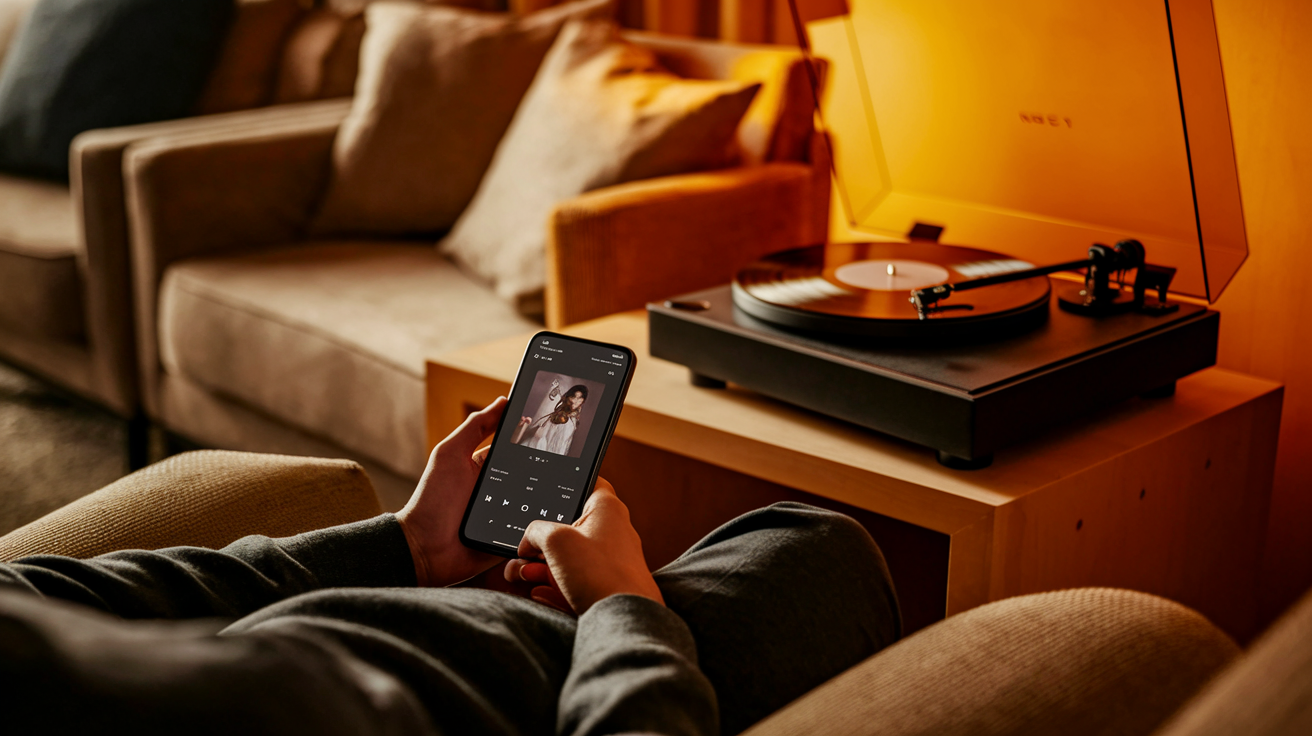The music industry has transitioned from a physical ocean of records and CDs to a digital sea dominated by Spotify and Apple Music. However, while streaming services entice with their convenience, vinyl records are experiencing a nostalgic and fascinating revival. This article examines the pros and cons of both formats and analyzes how their differing business models shape the landscape of the music industry for investors and consumers.
Musical Worlds: The Pros and Cons of Streaming Services and Vinyl Records

The development of the music industry has led to a fascinating juxtaposition of digital streaming and physical nostalgia. On one side are the gigantic libraries of services like Spotify and Apple Music, which offer anyone with an internet connection access to millions of songs. These streaming services combine convenience and accessibility in an unprecedented way. It has never been easier to explore entire albums with a click or receive music recommendations from smart algorithms. The cost structure, with affordable monthly subscriptions, especially for families and students, makes the world of streaming particularly attractive. However, even these digital paradises have their downsides. A stable internet connection is essential—a barrier in less connected areas. Moreover, sound purists occasionally complain about the audio quality that is not always satisfactory. Despite advancements in audio quality for streaming, for many, nothing compares to the analog warmth of a vinyl record.
Vinyl records offer a completely different listening experience. They create a physical bond with the music that goes beyond mere audio playback. The rich, warm sounds associated with this medium have a special charm that digital formats often struggle to achieve. However, this tactile listening experience is not without its complications. The physical space required for a collection of records and the care needed for their maintenance make vinyl impractical for mobile listeners or those mindful of space. Additionally, the costs associated with purchasing each individual record represent a significant factor.
In general, user trends reflect the desires and priorities of modern society. Streaming services dominate due to their convenience, while vinyl records are experiencing a resurgence, attracting those seeking a more authentic and intense musical experience. The interface between digital and analog, between ephemeral and timeless, invites reflection on the personal meaning of music and the place it occupies in our lives.
Business Models Compared: From Streaming to Vinyl Sales

Business Models in Detail: Variety in the Music Industry
In the ever-evolving world of music, business models define how content is consumed and what experiences are offered to listeners. At the heart of this chapter are the models of streaming platforms like Spotify and Apple Music, as well as the traditional sale of vinyl records.
The streaming subscription model has revolutionized the way music is used. Here, Spotify and Apple Music stand out, two giants that exhibit both similarities and notable differences. Spotify offers a flexible model that stands out particularly for its free ad-supported option. This flexibility is also reflected in its discovery features, which open up new musical horizons thanks to algorithms. However, the main criticism of the model remains the low remuneration that artists receive for each stream. Despite this, Spotify remains unparalleled for its large user base.
On the other hand, Apple Music offers a different type of exclusivity. Thanks to its seamless integration into the Apple ecosystem, it primarily targets users of Apple devices. Apple Music invests heavily in exclusive content and special features like live radio, which represents a strength. Despite the appeal of its offerings, such as the quality of integration with devices of the same brand, the lack of a free access point represents a significant difference compared to Spotify.
Unlike digital models, vinyl records follow a classic path. This return to fashion emphasizes the physical integration of music and the collectible value of objects. In this way, artists benefit from a direct revenue model through sales, a financial transparency often lacking in streaming. The physical nature provides collectors with a richer experience, both through the artwork and the depth of sound.
The comparison of these business models shows that each finds its specific target audience. The choice of format depends on user preferences—whether it be the simplicity and flexibility of the digital world or the nostalgic and immediate connection of the physical experience. The resulting coexistence of different business models underscores the diversity that characterizes the music industry today.